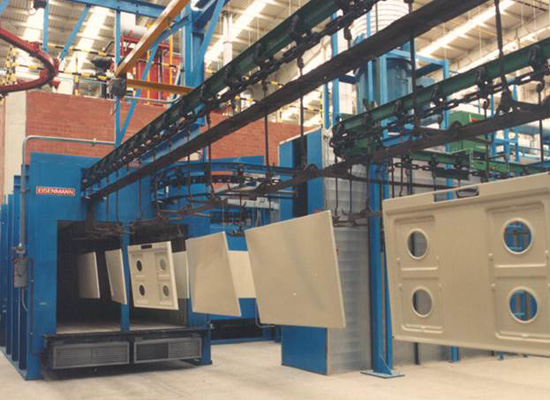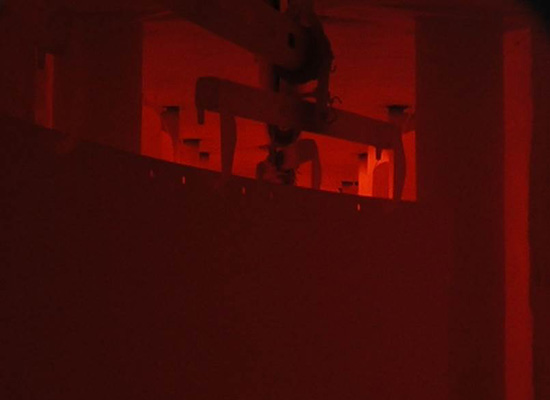Glass-Fused-to-Steel (Porcelain Enameled) Storage Tanks Have Proven Long Lifetime Value
Applying the glass coating
After inspection, the porcelain slurry coat is applied to the steel substrate using aqueous systems. Applied by robotic spray, the porcelain is carried to the steel parts that are dried prior to firing.

Photo courtesy of CST Storage
Glass slurry is applied to the steel parts for coating.
Firing
High temperatures above 1,500° F (815° C) are used to chemically fuse the porcelain coating with the steel. The molten glass reacts with the profiled steel surface resulting in an ionic exchange of materials to form an inert, inorganic chemical and mechanical bond. The slurry is fused to the steel sheets at temperatures above 1,500° F (815° C) to produce a glossy glass finish.
Parts may be fired in a batch or continuous furnace.


Photos courtesy of CST Storage
The porcelain coating is chemically fused with the steel in continuous furnace firing.









